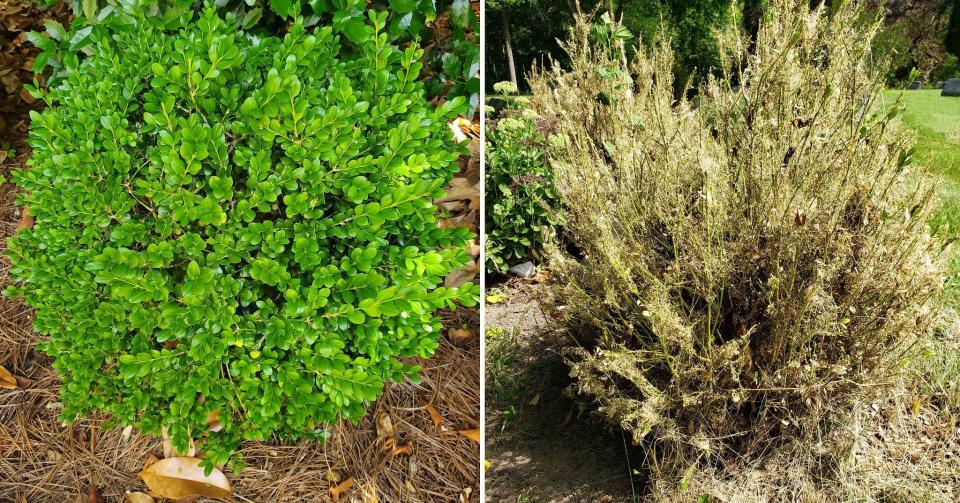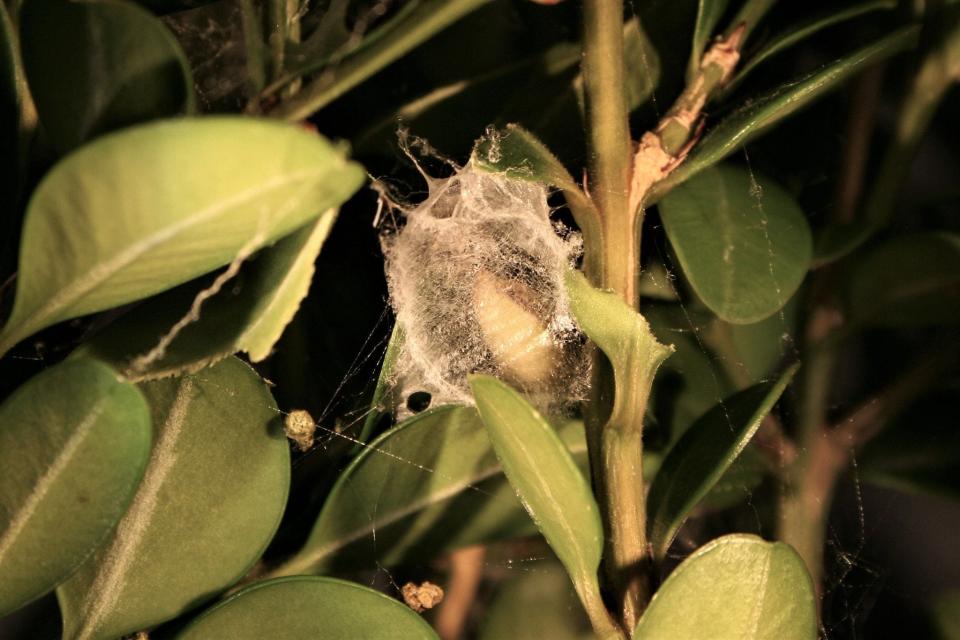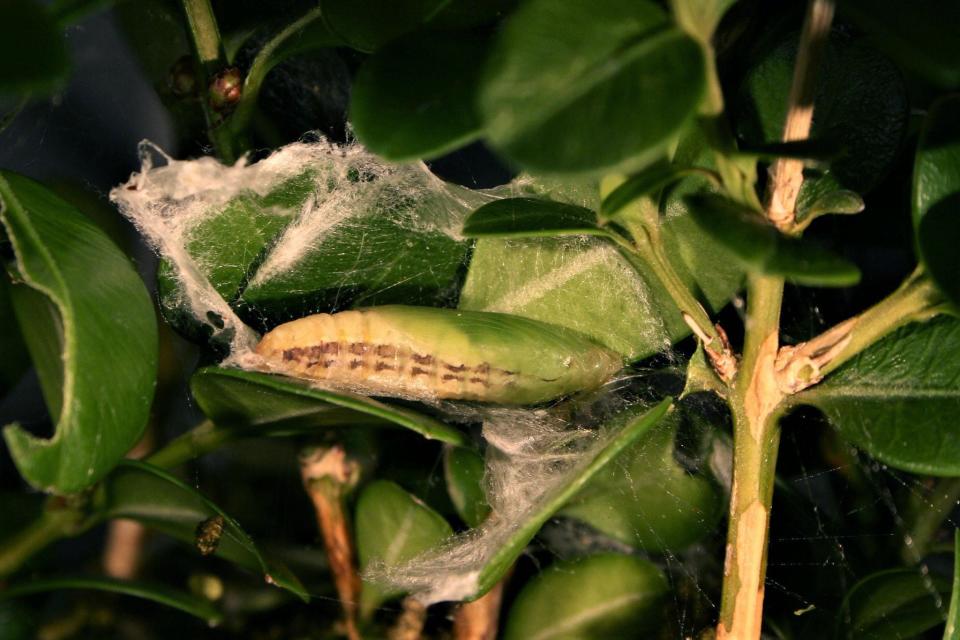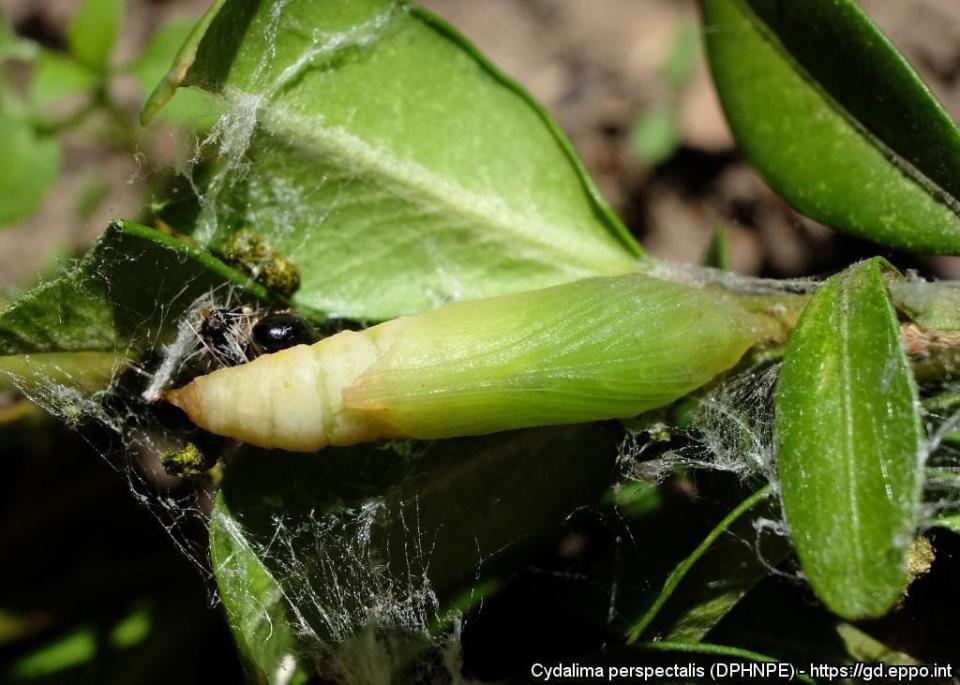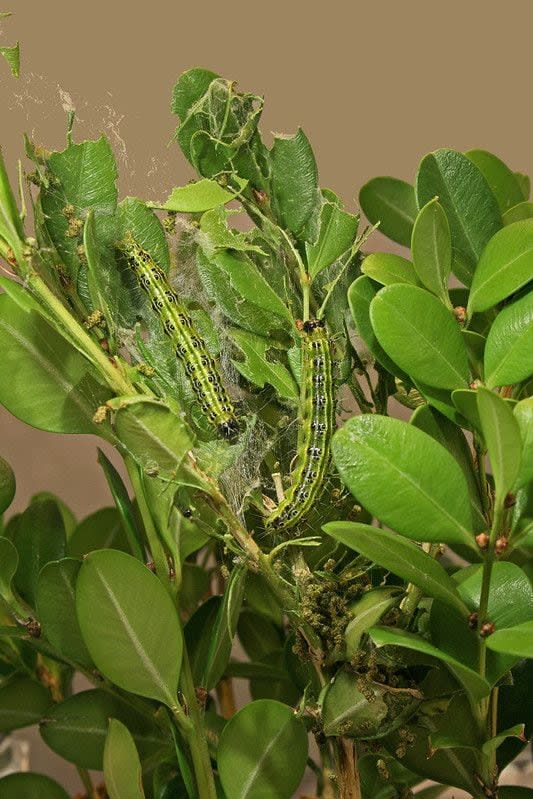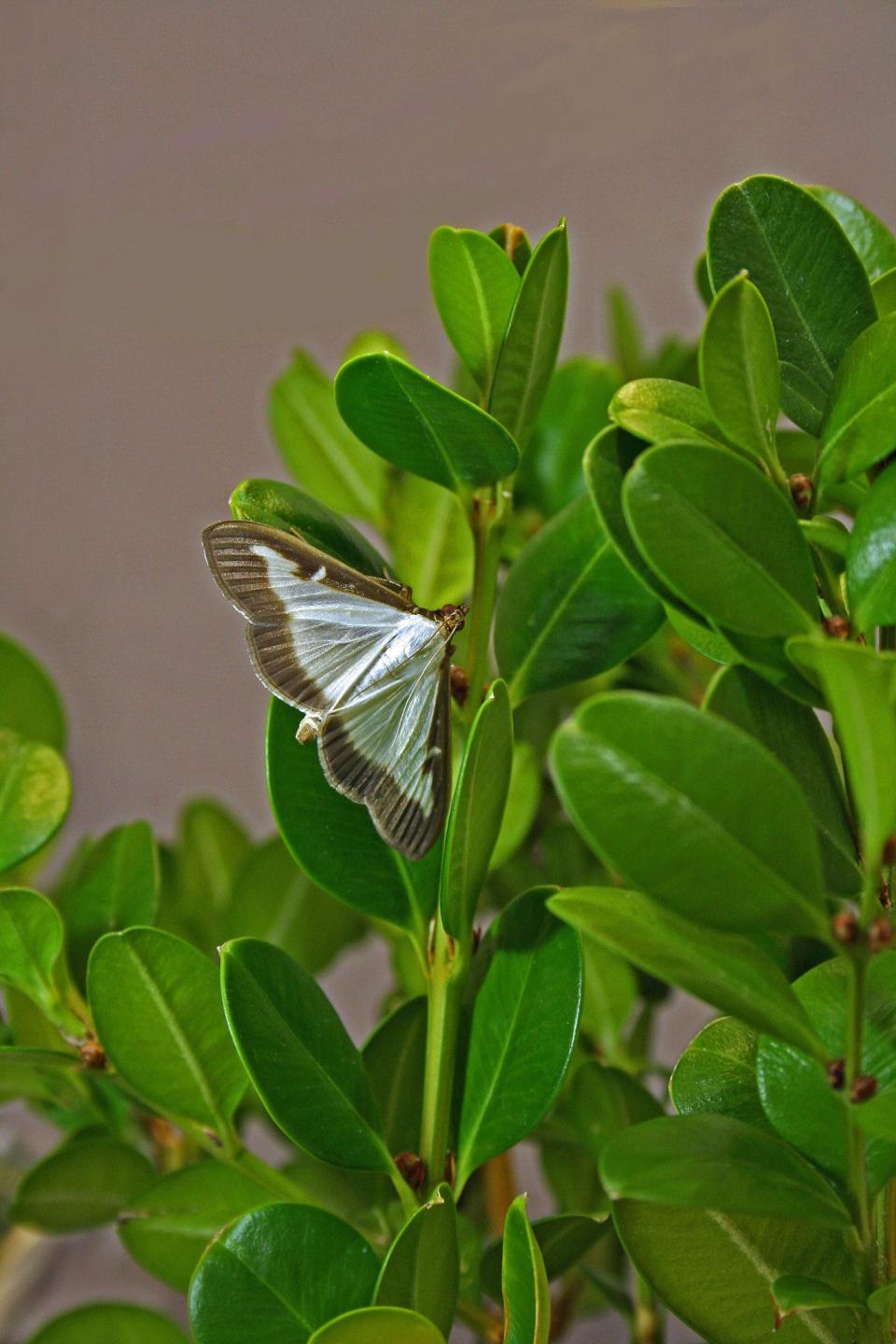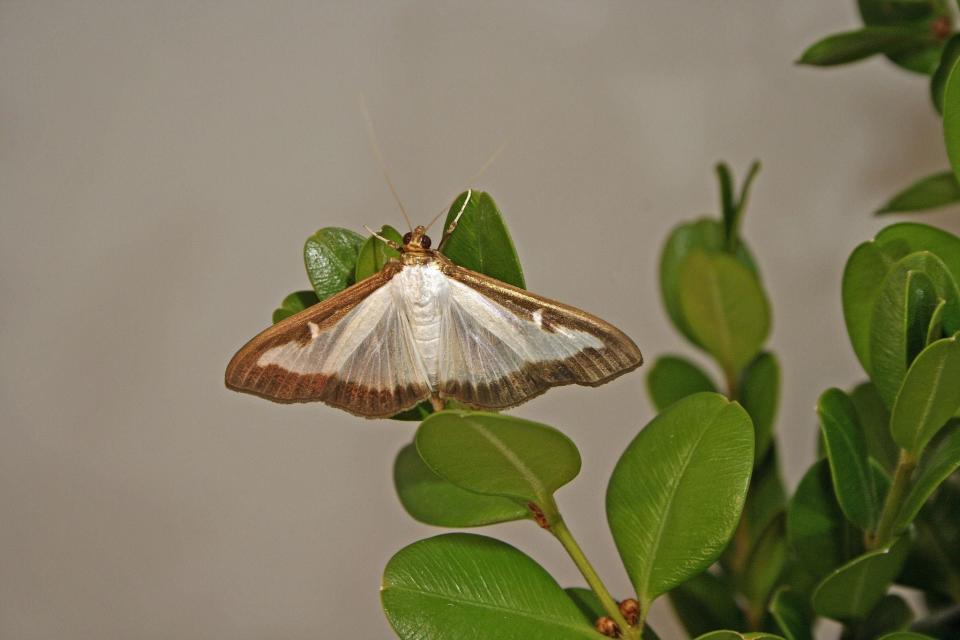Invasive pest detected in Ohio; What to do to protect your plants, if you spot one
As we are getting into prime planting season, experts are warning about an invasive pest that may put one of the most popular choices for landscaping at risk.
As reported by Nick Foley on News Center 7 at 5:00, the Box Tree moth has been detected in parts of Ohio, and parts of Montgomery and Greene Counties are under quarantine.
Robert Siebenthaler explained the growing process for the Boxwood shrub to News Center 7′s Nick Foley. He owns a nursery in Beavercreek where they grow the shrub.
>> PHOTOS: Different Stages of the Box Tree Moth
“We’ll take a very small cutting-something like this, and stick it in a growing medium,” Siebenthaler said.
Year after year, the Boxwood shrub is one of the nursery’s most popular items for gardens throughout the Miami Valley.
Ohio is one of the biggest producers of the shrub in the entire country.
“We grow roughly maybe a couple 1000 A year sell and grow most of them right here on our nursery and Beavercreek, but it’s one of the basic standard plants within a home landscape. Just simple green easy, slow growing, and clean,” Siebenthaler said.
>> PREVIOUS COVERAGE: Invasive pest detected in Ohio; several counties under quarantine
Now the Box Tree Moth, or more specifically its caterpillar self, has emerged as a real threat to the Boxwood.
The Ohio Agriculture Department has imposed a quarantine for the removal of the shrub south of Interstate 70 and west of Route 68.
The bright green pest has some black striping and begins by eating the plant’s leaves and left untreated will eventually destroy the plant altogether.
“A lot of homeowners will start seeing some caterpillars eating on the Boxwoods. There are pesticides available,” Courtney Fulks, the Ohio Box Wood Moth Inspection Manager, said.
>> PREVIOUS COVERAGE: Invasive pest detected in Ohio; What experts say to look out for
While pesticides are effective, Siebenthaler recommends not applying until you actually see the caterpillar, until then do weekly inspections just like area nurseries do.
“Get out in the landscape and take a look for problems. So not only a box tree moth but other diseases, fungal issues, and that goes for all plants,” Siebenthaler said.
At Siebenthaler’s they use traps just in case the Boxwood caterpillar shows up but the Ohio Agriculture Department recommends anyone who finds them in their plants at home to contact the state through its website to report and confirm disposal.


